Blog
Discover the four layers of the forest—and the animals living in it
Read moreAnimal species with the biggest and most unique noses
From elephants with big trunks to moles with tentacle-covered snouts, animal noses come in all shapes and sizes. Though all mammals have a nose, only certain species of reptiles and fish have one, each adapted to suit the specific needs of its owner.
Humans mostly use their noses to smell and breathe. Animals use theirs in lots of different ways: finding food on the ocean floor, picking up electromagnetic signals from prey, and even filtering dusty desert air, to name just a few examples. Read on to learn more about animals with big noses, uniquely shaped noses, and the various roles these noses play.
IFAW is a global conservation organization that works to protect animals, preserve their habitats, and build a world where animals and people can thrive together. Learn more about our work to protect elephants, one of the animals with the most unique noses in the world.
Some of these animals have the biggest noses in the world, while others’ noses are large relative to their body size.
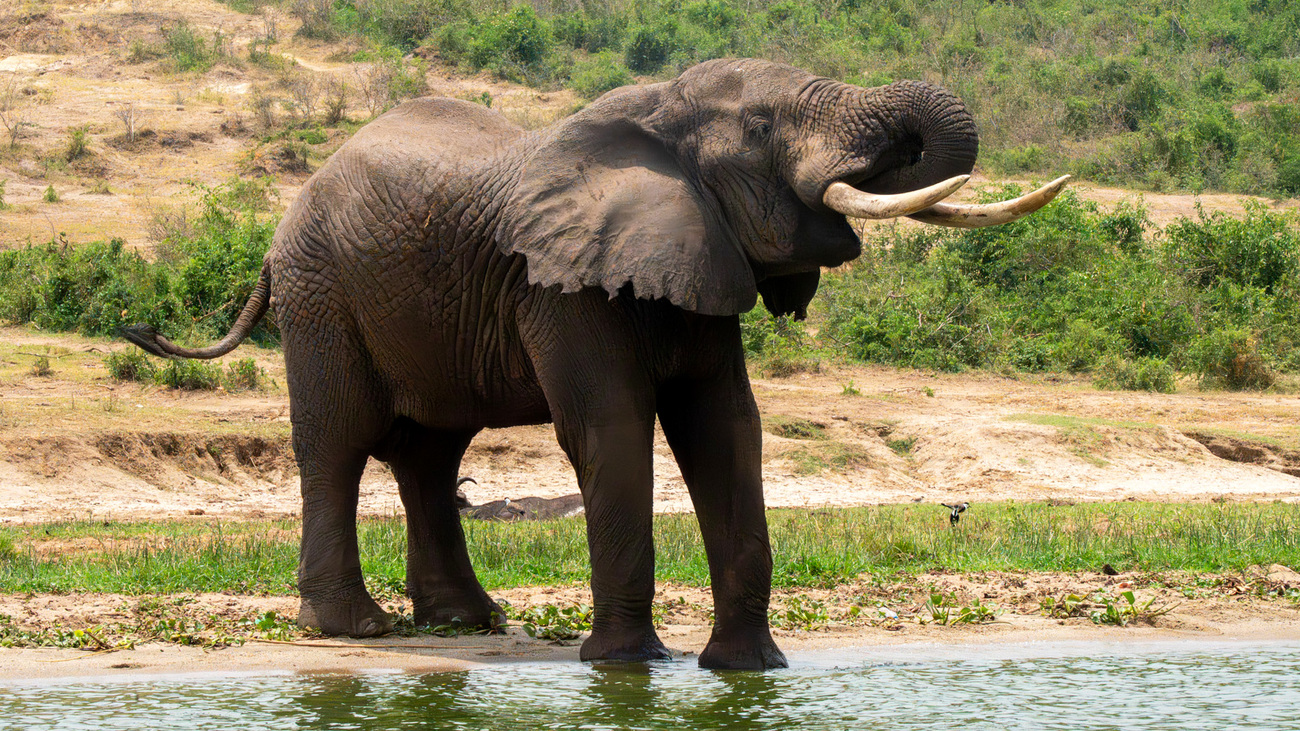
In addition to being the biggest land animals on Earth, elephants also have the largest noses of any animal species. An elephant’s nose, or trunk, is a fusion of its upper lip and nose, and it is highly flexible. It’s also exceptionally long—a trunk can reach up to two meters (seven feet) in length, nearly a quarter of an adult elephant’s body length.
An elephant’s trunk contains around 40,000 tiny muscles and is used for various purposes: drinking water, grabbing food, dusting themselves to repel insects, and even as a snorkel when swimming.
Elephants' dexterity enables them to pick up objects as small as a single blade of grass and as heavy as large tree branches. This versatility is essential for their survival in diverse habitats across Africa and Asia. Elephants typically live in open and wooded savannahs but also spend time in deserts and forests.
African savannah elephants are listed as endangered on the IUCN Red List. Threats to this species include habitat loss due to deforestation and agricultural expansion, human-wildlife conflict, and poaching for ivory and other body parts. They also have low reproductive rates, which makes them more vulnerable to these threats.
Proboscis monkeys, native to the rainforests and mangroves of Borneo, are relatively large primates, with males standing up to 72 centimeters (30 inches) tall and weighing up to 22 kilograms (50 pounds). They have prominent brows, reddish-brown fur, and protruding bellies. Their most distinctive features, though, are their bulbous noses. In male proboscis monkeys, the nose is around 10 centimeters (four inches) long and hangs lower than its mouth.
This large, pendulous nose is thought to play a role in attracting females, as it helps males create louder calls that can travel through the dense forest. It’s also believed that the nose helps with temperature regulation and enhances the monkeys’ sense of smell. The word ‘proboscis’ refers to an elongated appendage from an animal’s head, which is how these monkeys got their name.
Classified as an endangered species, proboscis monkey populations are threatened primarily by habitat destruction due to logging, palm oil plantations, and human settlement expansion. Hunting and poaching are further threatening their survival in the wild.
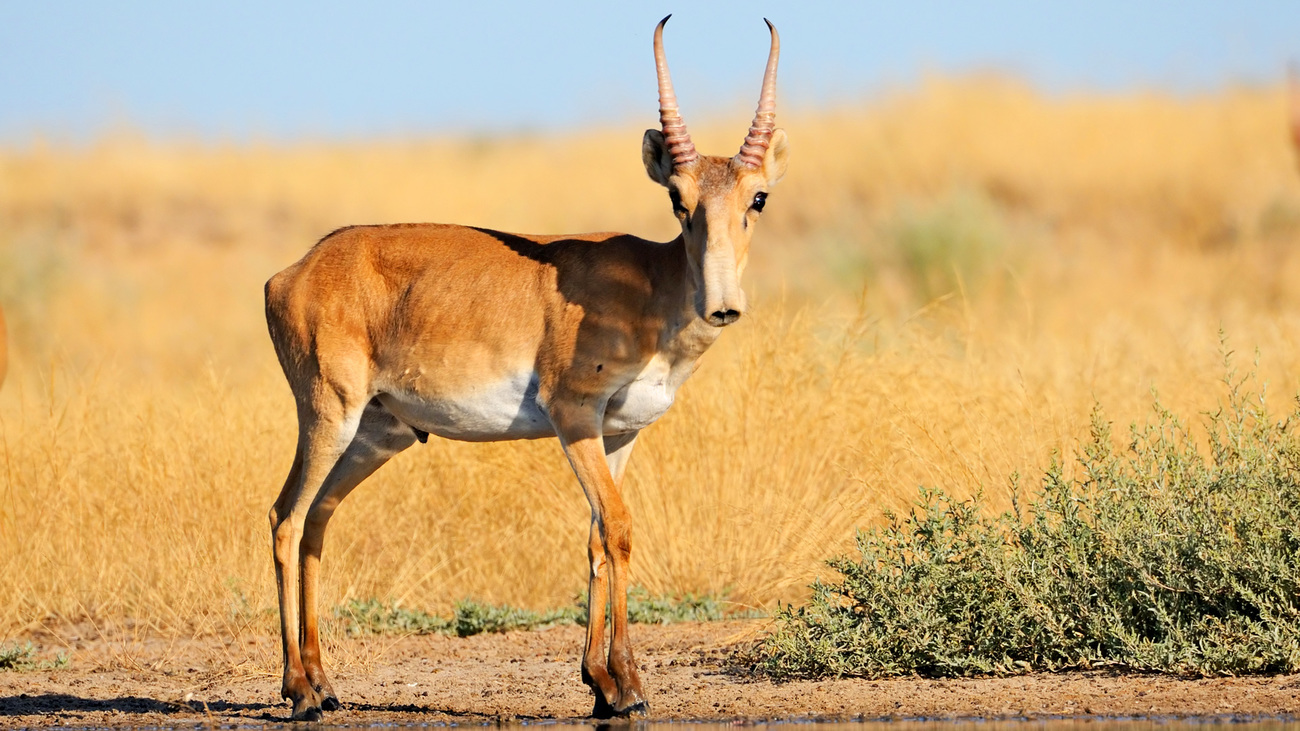
Known as ‘the world’s weirdest antelopes’, saigas are distinguished by their large, bulbous noses and sand-coloured fur. Their unique noses are very effective in moistening the air drawn in from their arid and semi-arid habitats, filtering out dust during their migrations, and warming cold air in the winter. It’s also believed that their relatively large noses give them a keen sense of smell and function as an echo chamber for their roars.
Though they once roamed in million-strong herds across Europe and Asia, they are now a critically endangered species found only in Central Asia. Saiga antelopes are poached for their horns—which are used in traditional medicine—and have experienced extensive habitat loss due to agricultural expansion. Disease outbreaks have also drastically reduced their numbers.
Tapirs are large mammals with a similar shape and size to a pig, but with a nose that looks like a stumpy elephant trunk. They have stocky bodies with distinctive colour patterns—the Malayan tapir, for instance, sports a striking black and white coat.
Found in the jungles of Central and South America and Southeast Asia, their short, trunk-like snout is suited for grasping leaves and fruit, helping them forage for food on the jungle floor. They also use this trunk to grab fruit and branches from trees. When swimming, they can use their long snouts as a snorkel.
Tapirs range from vulnerable to endangered on the IUCN Red List, depending on the species. The main threat to their survival is habitat destruction, primarily due to agriculture and logging. They are also hunted for meat.
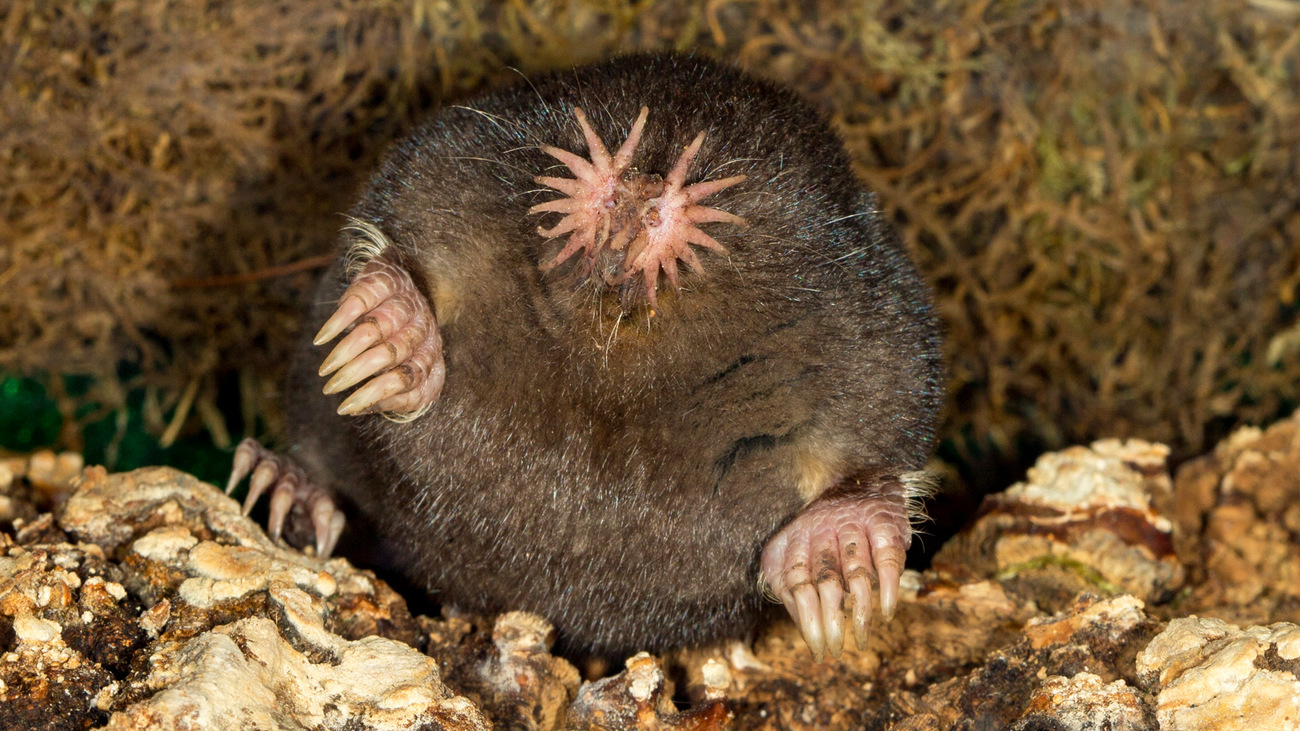
Star-nosed moles, found in the wetlands of North America, have a dark, velvety fur and large forelimbs adapted for efficient digging. Their name comes from their very unique nose that features 22 fleshy tentacles, splayed out in a star formation.
The tentacles, also called rays, are highly sensitive and packed with touch receptors. The nose helps the mole detect and capture prey with remarkable speed—star-nosed moles can identify small invertebrates seven times faster than a person can blink.
Found across the eastern US and Canada, star-nosed moles prefer wetland habitats with moist soil, such as marshes, swamps, and peatlands. This species is classed as least concern by the IUCN.
Aardvarks are unique nocturnal mammals that live throughout much of sub-Saharan Africa. They are small and stocky, with robust bodies covered in coarse hair. Aardvarks use their strong claws to burrow into termite mounds and feast on the insects.
Aardvarks are also known for their distinctive noses. Their snouts are long and tubular and give them a keen sense of smell, which helps them locate ants and termites, their primary food sources. The aardvark’s nose is also highly flexible, perfect for digging and foraging.
The IUCN classes aardvarks as least concern, but they are threatened by habitat loss due to agricultural development. Pesticide use has also led to a decline in insect prey for aardvarks.
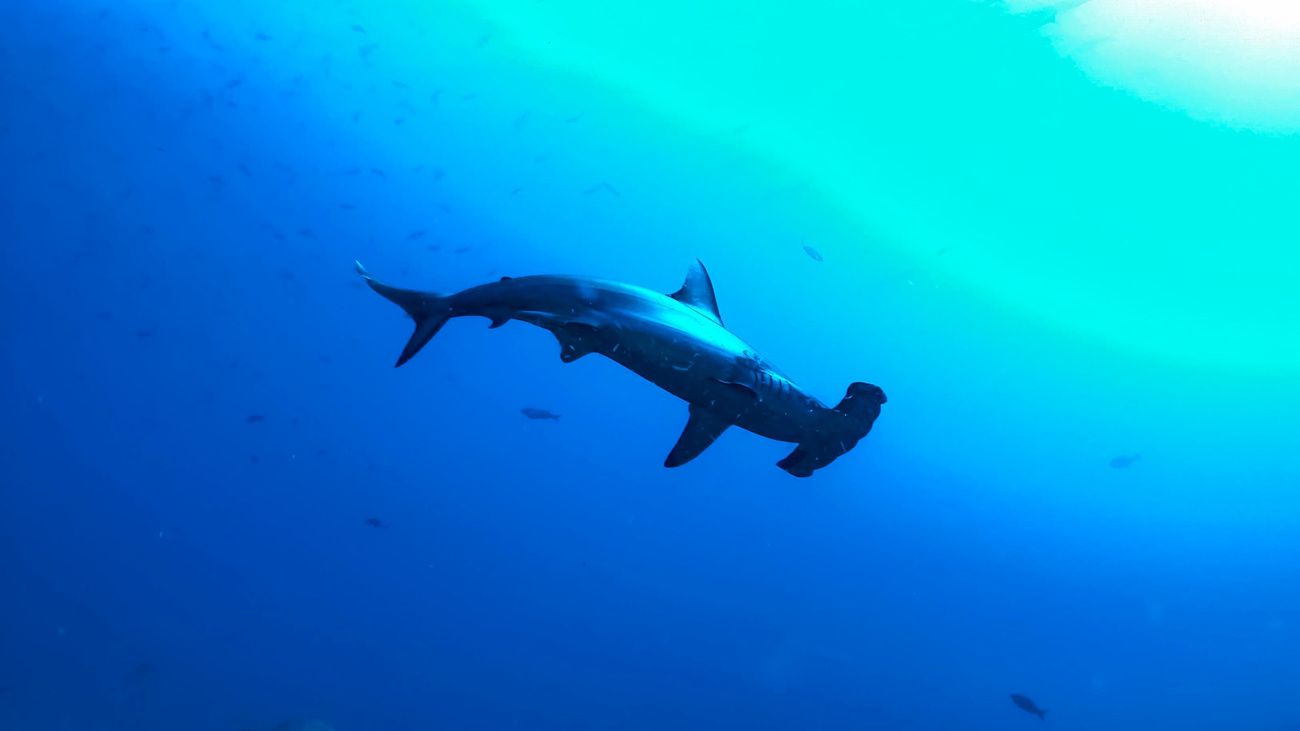
Hammerhead sharks are easily recognised by their unique, hammer-shaped heads, which can span up to a meter (three feet) in length. The shark’s body grows up to six meters (20 feet) long.
This distinctive head shape provides the hammerhead shark with enhanced sensory capabilities, wide-set eyes for a better visual range, and numerous electroreceptors to help detect prey. The hammer shape also means that their nostrils are very wide-set, giving them a keener sense of smell and a heightened ability to locate prey.
These sharks inhabit warm, coastal waters and the open ocean, with some living on continental shelves and coral reefs. Hammerhead sharks range from vulnerable to critically endangered on the IUCN Red List, depending on the species. They face significant threats from overfishing, bycatch, and the shark fin trade.
It’s probably easy to guess what an elephantnose fish looks like just from its name. It is a small, dark-coloured fish, usually about 23 centimeters (nine inches) long, with an elongated, trunk-like lower jaw. The appendage looks like an elephant’s trunk but is actually an extension of the fish’s mouth. It is used for sensing and identifying food items on the riverbed. Scientists also note that the ‘nose’ is also used in communicating, navigating, and self-defence.
Elephantnose fish are primarily nocturnal, and with dark, streamlined bodies, they swim through murky waterways undetected at night. They are classed by the IUCN as least concern.
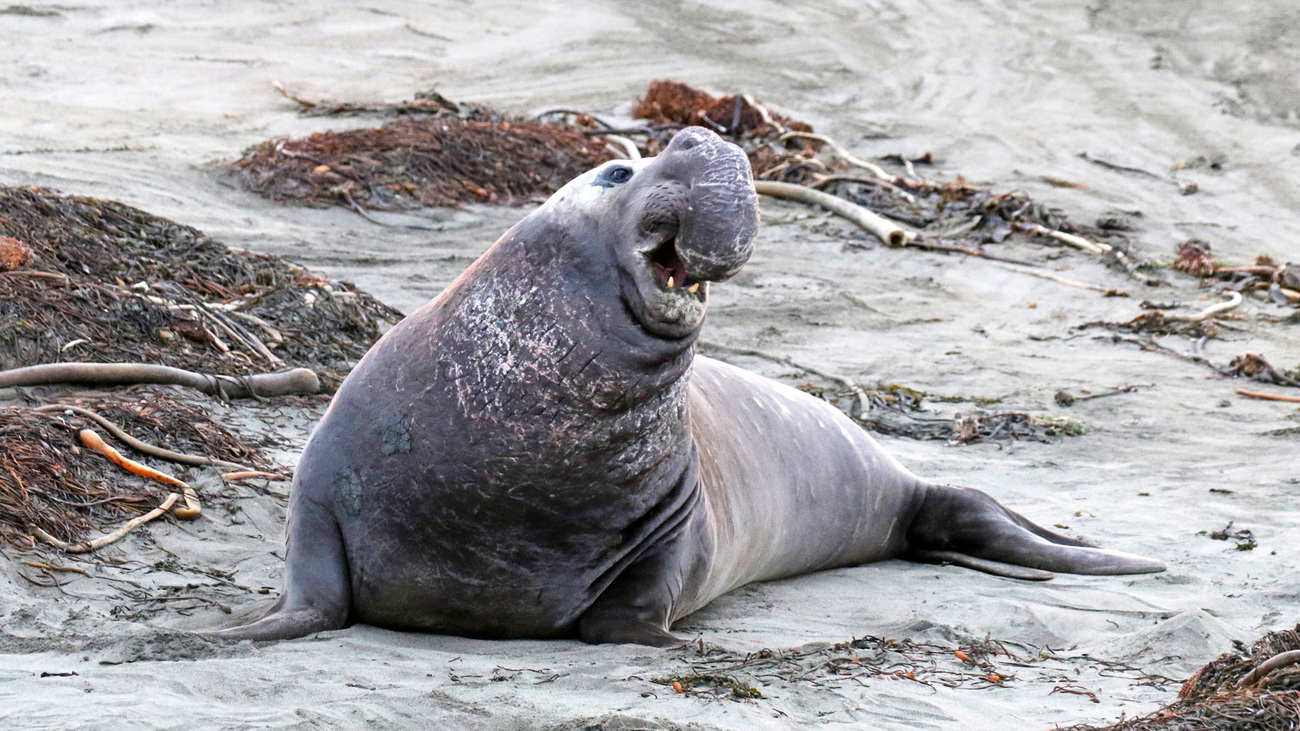
Also named after the largest living land mammal, male elephant seals have large, trunk-like noses that can grow up to about 30 centimeters (one foot) in length. They are used to produce loud roaring sounds during the breeding season to establish dominance, intimidate challengers, and attract females. These seals also have very large bodies, with males reaching lengths of up to six meters (20 feet) and weights of up to 4,000 kilograms (8,800 pounds).
Elephant seals are found along the coastlines of the Pacific Ocean, particularly on beaches in California and around sub-Antarctic islands. Classed by the IUCN as least concern, elephant seal populations have rebounded due to legal protections after being hunted nearly to extinction in the 19th century. Despite their recovery, threats such as entanglement in fishing gear and habitat disruption continue to pose risks to their populations.
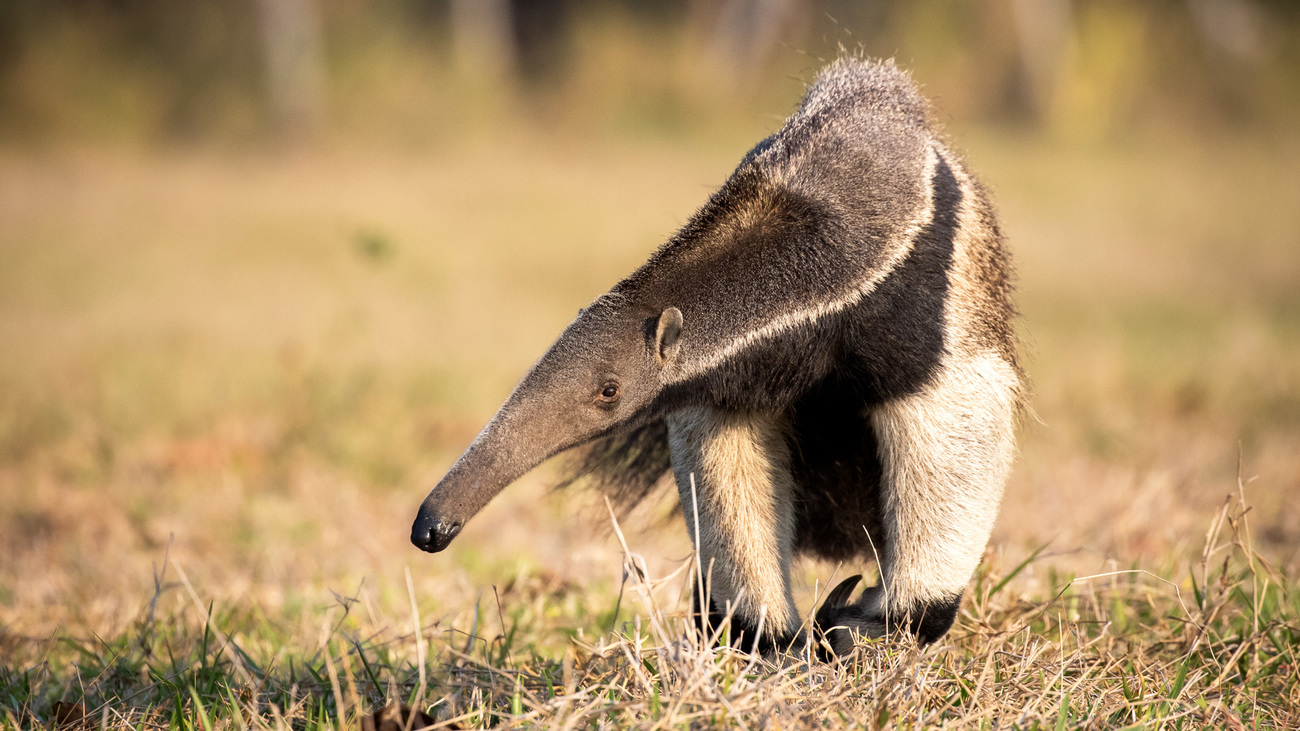
Anteaters are toothless, insectivorous mammals with long bodies covered in coarse black, white, and/or brown fur and long, tubular snouts and tongues. The giant anteater, the largest species, can grow over two meters (seven feet) long from nose to tail.
Just like aardvarks, anteaters use their snouts to find and feast on ants and termites. Inside their nose is an elongated, sticky tongue that can extend up to 60 centimeters (two feet) to capture their small prey efficiently.
Native to Central and South America, there are four anteater species. While giant anteaters are classed as vulnerable by the IUCN, the northern tamandua, southern tamandua, and silky anteater are classed as least concern. Anteaters are threatened by habitat loss, excessive hunting, and their naturally low reproductive rates.
IFAW supports the conservation and rescue of animals around the globe, including some of the animals on this list. For example, we support the Lusaka Elephant Nursery and Zimbabwe Elephant Nursery in their work to raise orphaned elephant calves. We also work with the Tamanduás Institute, an organisation that works to save anteaters and other wildlife in South America. Find out how you can get involved.
every problem has a solution, every solution needs support.
The problems we face are urgent, complicated, and resistant to change. Real solutions demand creativity, hard work, and involvement from people like you.
Unfortunately, the browser you use is outdated and does not allow you to display the site correctly. Please install any of the modern browsers, for example:
Google Chrome Firefox Safari